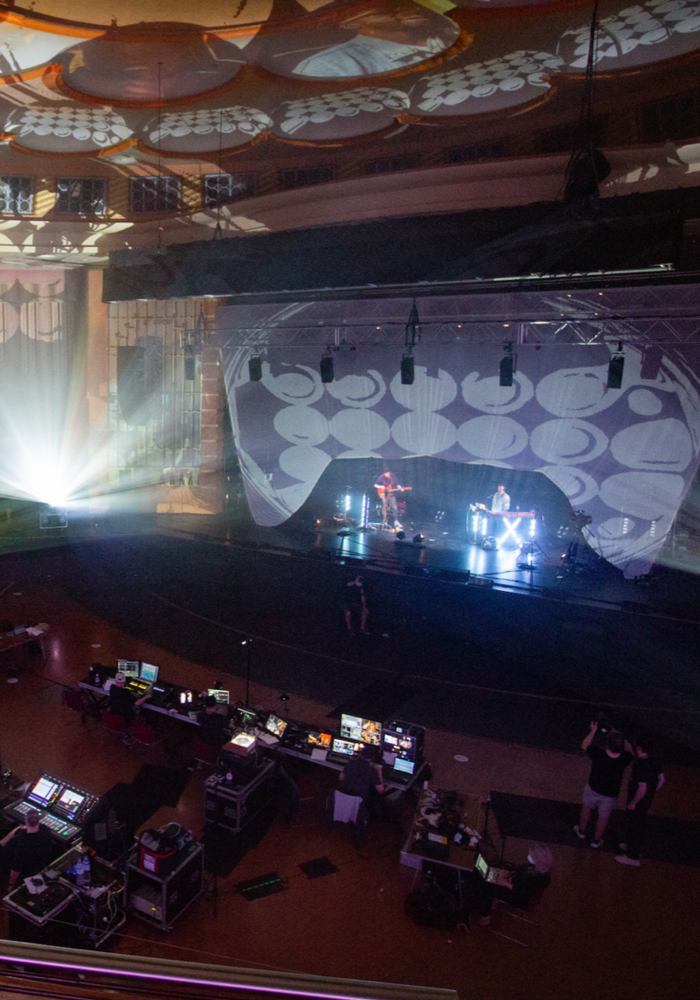Last month saw the latest round of trials take place for the world’s first ever 5G Festival, due to take place in early 2022. And Headliner has spoken to those at the heart of the project to find out how the event is progressing and what the music industry can expect from the concept.
In early November, the partners behind the 5G Festival completed another successful trial to demonstrate the benefits of advanced digital technologies on artist collaboration and audience experience.
The latest 5G Festival trial was centred on solving the key technical barriers of AV latency, with a band of musicians split between Brighton Dome’s concert hall (vocals and keys), the Band Room in Brighton Dome (bass) and Metropolis Studios in London (drums). A live audience was also included in the trial for the first time to provide feedback on their experience.
The trial also tested the audience virtual reality experience and the set-up of the spatial audio in a separate large space for multiple users. This was used to create a ‘virtual festival’ experience designed to transport the audience member from wherever they are to the centre of the Brighton Dome Concert Hall auditorium.
The drummer performed using augmented reality glasses, live streaming through a 5G network-ready 360° content distribution platform, and an immersive audio mixing interface, allowing them to collaborate as though together on one stage.
For the audience, augmented and virtual reality and 360° video technology will, according to organisers, ‘create a more emotionally connected experience in-venue, and will enable live streaming into their own homes on their preferred viewing device, or from one venue to another’.
To find out more, Headliner caught up with two of the 5G Festival partners’ senior figures, Sonosphere director Jamie Gosney, and DiGiCo (part of the Audiotonix group) brand ambassador Dan Page to discuss what was discovered from the new trial…
What did this latest round of trials entail?
DP: From an audio point of view, we’ve used the expertise of the Audiotonix group with Calrec bringing the AoIP and AES67 capability, KLANG the immersive in-ear system and DiGiCo the live mixing expertise. Each local system isn’t very far removed from our normal set up, with the majority of the development work going into the network.
While the end result each time has been the same – getting the audio over the network - the underlying structure, the topology, has taken a step a forward each time. We’ve made the routing more efficient in terms of getting it from site A to site B. It’s those network refinements in terms of routing the multicast audio between sites that have taken the biggest step forward with the latest trial. We’ve made the technology work in a much more elegant way.
JG: Also, for the first time during these trials, we were able to take the audio feeds from each of the locations, bring them back into our spatial mixing studio at Metropolis and then broadcast the spatial mix out to a live, immersive system in the Founders Room at Brighton Dome. This was an exciting addition to what has gone before and will now play a part in the ongoing trials and the final showcase.

